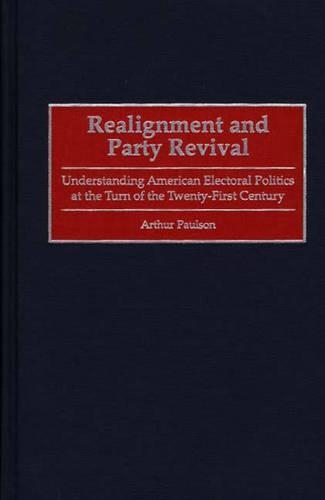
Realignment and Party Revival: Understanding American Electoral Politics at the Turn of the Twenty-First Century
(Hardback)
Publishing Details
Realignment and Party Revival: Understanding American Electoral Politics at the Turn of the Twenty-First Century
By (Author) Arthur Paulson
Bloomsbury Publishing PLC
Praeger Publishers Inc
30th June 2000
United States
Classifications
Professional and Scholarly
Non Fiction
Elections and referenda / suffrage
Central / national / federal government
324.973
Physical Properties
Hardback
376
Description
Are American political parties really in decay Have American voters really given up on the major parties Taking issue with widely accepted theories of dealignment and party decay, Paulson argues that the most profound realignment in American history occurred in the 1960s, and he presents an alternative theory of realignment and party revival. In the 1964-1972 period, factional struggles within the major American political parties were resolved, with conservative Republicans and liberal Democrats emerging as the majority factions within their parties. The result was a critical realignment in Presidential elections, in which the decisive realignment involved the movement of white voters in the south toward the Republican coalition. The impression of dealignment came from the fact that electoral change in Congressional elections moved at a much slower rate. The south continued to vote Democratic for congress, usually for incumbent conservative Democrats. The result was an electoral environment which produced divided government. Secular realignment in congressional elections produced the Republican majorities of 1994. Now the conservative Democrats who were the swing voters since the 1960s, were voting Republican. The result is that the coalitions for yet another realignment are in place at the turn of the twenty-first century. After three decades in which the swing voters were relatively conservative, the new swing voter is a genuine centrist; an independent who is ideologically moderate. The coming realignment, Paulson asserts, will consummate the birth of a new, ideologically, polarized party system with a greater potential for party government, which would be a fundamental change for American democracy. A major resource for scholars, students, and other researchers interested in American parties and elections.
Reviews
In this study, Paluson advances a simple but compelling argument....Paulson's study is essential reading for anyone interested in parties and elections and is especially appropriate for graduate courses on parties and elections.-Choice
"In this study, Paluson advances a simple but compelling argument....Paulson's study is essential reading for anyone interested in parties and elections and is especially appropriate for graduate courses on parties and elections."-Choice
Author Bio
ARTHUR PAULSON is Associate Professor of Political Science and the University Pre-Law Advisor at Southern Connecticut State University./e He is a life-long student of parties and elections.
